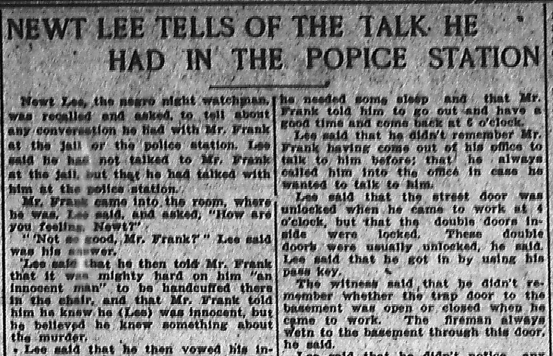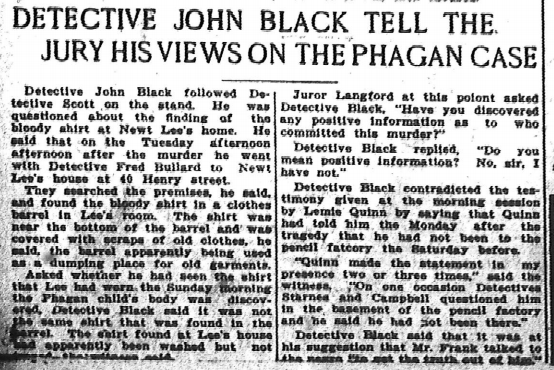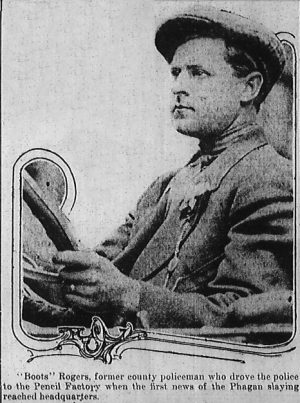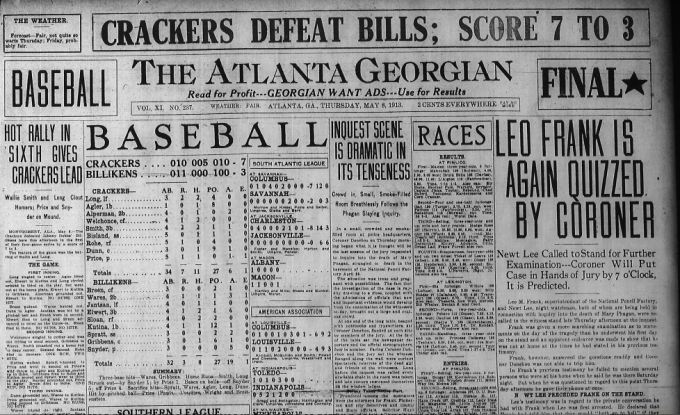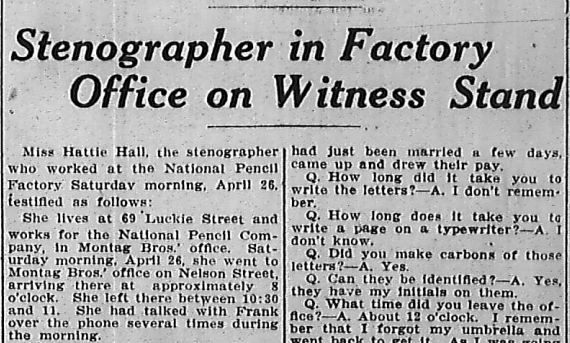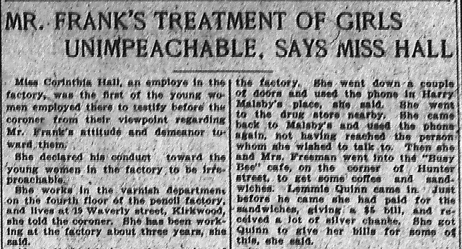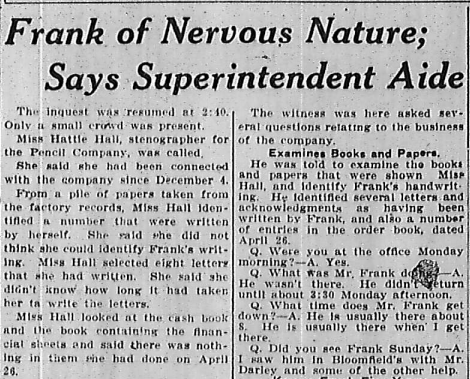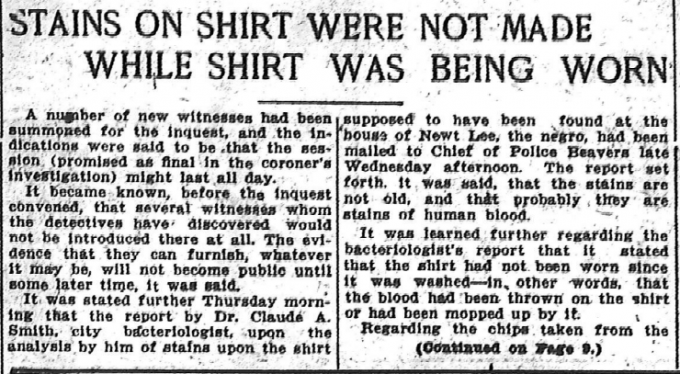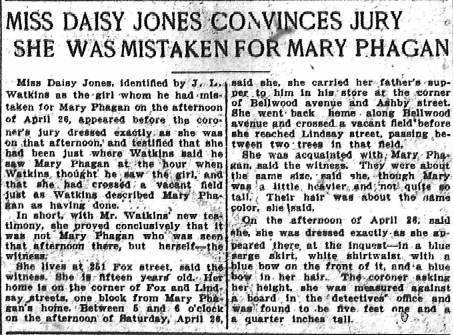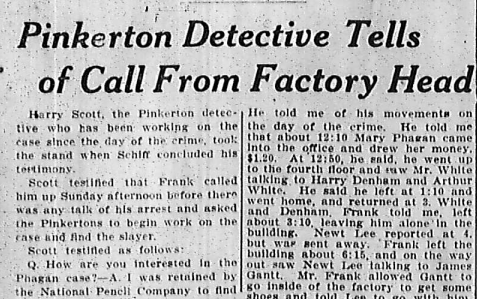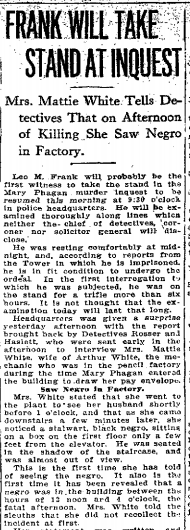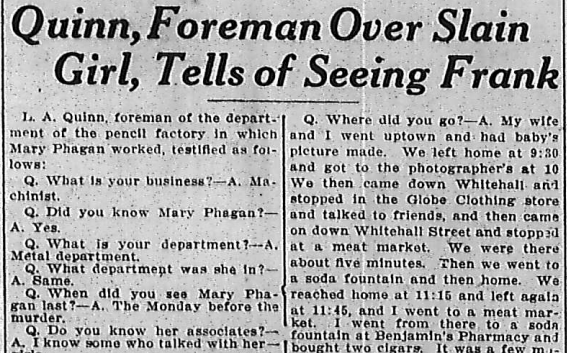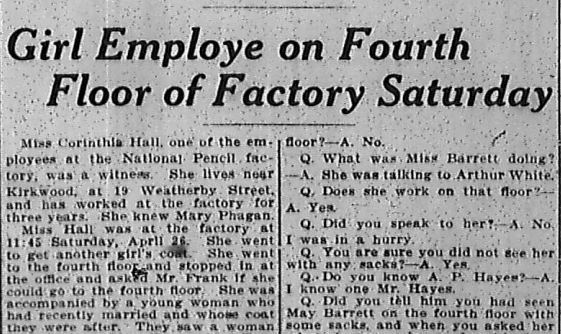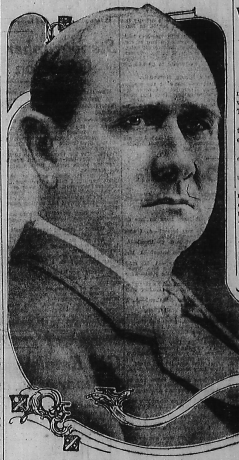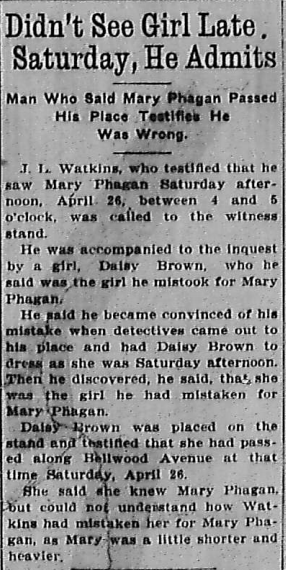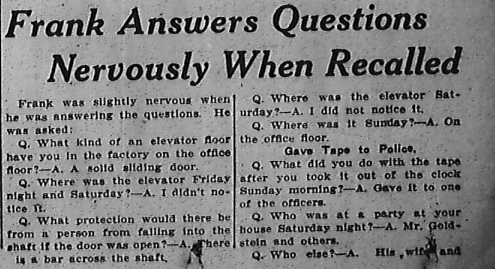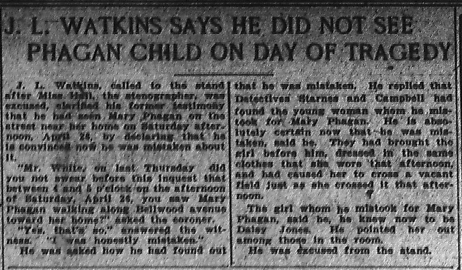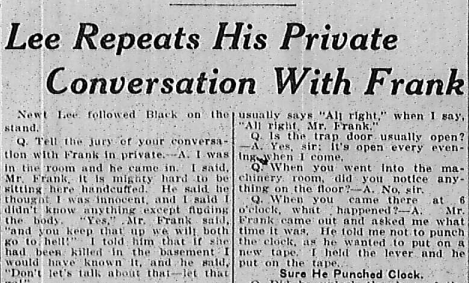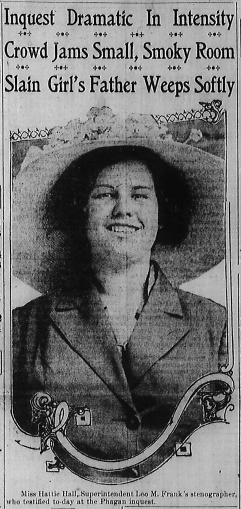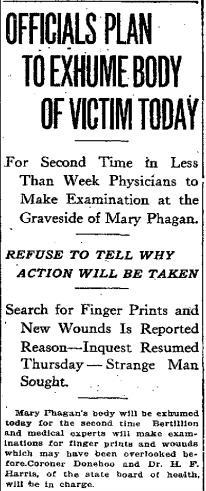Another in our series of new transcriptions of contemporary articles on the Leo Frank case.
Atlanta Journal
Friday, May 9th, 1913
Newt Lee, the negro night watchman, was recalled and asked to tell about any conversation he had with Mr. Frank at the jail or the police station. Lee said he has not talked to Mr. Frank at the jail, but that he had talked with him at the police station.
Mr. Frank came into the room, where he was, Lee said, and asked, “How are you feeling, Newt?”
“Not so good, Mr. Frank?” Lee said was his answer.
Lee said that he then told Mr. Frank that it was mighty hard on him “an innocent man” to be handcuffed there in the chair, and that Mr. Frank told him he knew he (Lee) was innocent, but he believed he knew something about the murder.
Lee said that he then told Mr. Frank that the officers had said the girl was killed on the second floor; that he said in his rounds of the building he had to pass through the second floor room, which had been indicated, every half hour and that he would have known it if the murder had been committed there.
Lee said that Mr. Frank then said: “Let’s don’t talk about that. Let that go.”
Lee said that the furnace had been fired on Friday, but that it had not been fired on Saturday. He went to work shortly before 4 o’clock, Saturday afternoon and called to Mr. Frank, as usual, “All right, Mr. Frank.” Continue Reading →

